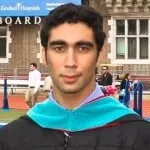In the recent barbaric incident of State brutality, the Punjab police opened fire on the workers of Dr Tahirul Qadri resulting in the death of eleven innocent civilians and over eighty others injured. The dead included two women as well, one of them pregnant. TV footages revealed how the government machinery was used to manhandle and torture unarmed protestors.
Seasoned PML-N politicians like Khawaja Saad Rafique seemed borderline apologetic, trying to divert the blame from the government and reminding the nation how dozens are killed in Karachi allegedly under the supervision of Muttahida Qaumi Movement (MQM). Punjab Law Minister Rana Sanaullah, too, had everything but remorse in his statements.
Are we expected to be numb to this? Why not move on with life? After all, eleven is not a huge death toll in a country like Pakistan. We have witnessed many such atrocities over the years; the cruelty during Musharraf’s era as well as the tyranny during Zia’s time. But one wonders if there is any difference between the dictatorial regimes and the so-called champions of democracy.
Right when people tend to forget the bond of love between Nawaz Sharif and Ziaul Haq, forgive PML-N for storming the Supreme Court in 1997, and believe that they have moved on from the politics of vengeance, they start showing us harsh glimpses of the past.
The political motives of Dr Tahirul Qadri may be dubious; however, it does not give a green-signal to the government to slaughter its opponents. Shahbaz Sharif, who himself led multiple protests during the previous government, now seems to abhor his opponents when they do the same.
While many die in Pakistan at the hands of non-state actors, this particular incident holds significance for a number of reasons.
One, the government machinery was used to directly fire at unarmed civilians.
Two, this happened under the nose of the vigilant Chief Minister, Shahbaz Sharif, who claims to be the ‘Khadim-e-Aala’.
Three, this was a clear violation of Article 9 of the constitution that makes it binding on the government to protect the life and liberty of people.
Four, those who should have owned responsibility, were seen tossing around the blame.
Five, PML-N leaders were the frontrunners in chanting slogans of justice and democracy before the elections.
Six, this depicts the autocratic mindset of our rulers.
As we stand in the midst of an ongoing military operation and threats to internal security loom over us, the political forces need to be united. However, the government has fuelled an already turbulent political environment, thereby giving a reason to its opponents to exploit.
This incident also reiterates the menace of politicised bureaucracy especially the police department. It draws our attention to how the administrative machinery is unlawfully used by the ruling parties for their personal interests.
One is left awestruck at the ironic state of our police, which often fails to protect those who are to be protected and supports those who are to be incarcerated, that too intentionally. The epitome of this attitude was seen during the recent Lahore tragedy when the now famous ‘Gullu Butt’ went on a rampage and vandalised public property under the tutelage of police. The same police failed to protect him from the torture of the public when he was brought to appear before a local court.
This episode also highlights the rampant culture of vigilante justice in our society. The Lal Masjid saga, the street lynching of the two brothers in Sialkot, the frequent cases of honour killings, as well as the recent ‘Gullu Butt’ incident all have a common denominator.
As every other civilised nation, should we not restrain from taking the law in our hands? Should we not have faith in our police and judicial system? But then are we a civilized nation at all? And who are we to trust when our law makers and law enforcers reveal their deceitful faces time and again?
As much as we adore democracy, it is largely an intangible concept and cannot provide bliss to the people unless practiced in letter and spirit. Dyer’s mentality and democracy cannot go hand-in-hand.
General Dyer remains a symbol of brutality, dictatorship, and intolerance. Sadly, his ghost thrives among us to this day. We have seen Dyer in the form of military dictators who played havoc with the civilians. We have seen him in our political leaders, dressed in a cloak of democracy, plundering our nation at will. We have seen him in the politicised bureaucrats who dance at the unlawful orders of their godfathers. And we have also seen him in the common man who kills in the name of religion.
Will we ever learn from our past, bury this attitude, and progress on the path of democracy?
To me, ‘Khadim-e-Aalaa’ was the last person to be possessed by the ghost of Dyer. I remember the verses of Habib Jalib that he zealously used to recite before elections.
“Tum ne loota hai sadiyon humara sukoon
Ab na hum pe chale ga tumhara fusoon
Chaaragar mai tumhein kis terhaan se kahoon
Tum nahi chaaragar, koi mane magar, mai nahi maanta mai nahi jaanta”



COMMENTS
Comments are moderated and generally will be posted if they are on-topic and not abusive.
For more information, please see our Comments FAQ